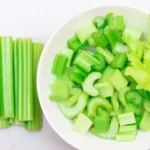Are you tired of your garden’s constant battle against pests and low productivity? Then, discovering the benefits of companion planting may be the solution you have long been looking for. This age-old gardening technique can help create a diverse and harmonious garden that promotes optimal plant growth and health by combining the right plants in your backyard garden.
Companion planting pairs compatible plants to create a sustainable and natural garden environment. With numerous benefits such as pest control, increased productivity, and improved soil health, companion planting ensures your veggies have friendly neighbors that help promote a robust ecosystem while reducing the need for harmful chemicals.
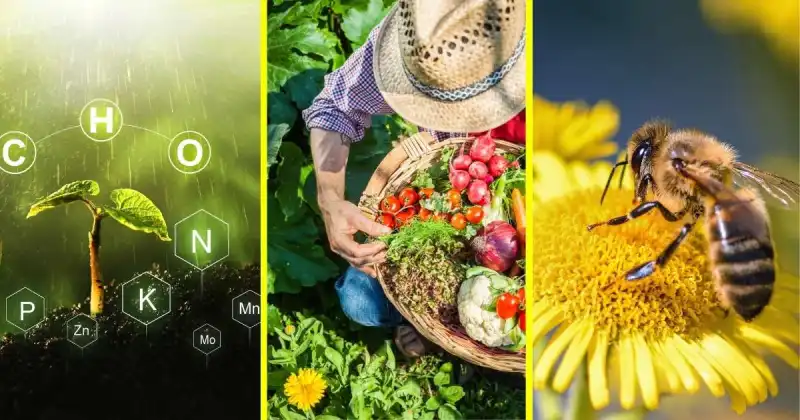
If you have yet to implement companion planting in your food oasis, get ready to unlock the full potential of what your garden can do. Discover this must-read article’s fascinating history, scientific principles, and practical applications of companion planting.
From attracting beneficial pollinators to enhancing garden aesthetics, this sustainable and natural gardening technique offers various advantages suitable for gardeners of all skill levels. So let’s embark on a journey together to unveil the valuable hidden potential of companion planting that can help turn your garden into a vibrant and fruitful haven.
Humble Highlights
- Discover the perks of companion planting’s rich history to reap the benefits in your backyard garden AND get to know some basic combinations that can help your garden now!
- Save time by learning how to organize your garden correctly so you know which friendly companions can help your garden prosper season after season.
- Unlock the 19 most common advantages of companion planting so you build a self-sufficient, healthy, and robust garden any humble gardener would be proud of.
Companion Planting And Its Perks
Companion planting is a fantastic gardening technique that pairs multiple crops together to create a harmonious and fruitful garden. While gardeners can achieve better crop growth and quality by growing complementary plants nearby, that’s just the start. Companion planting has many benefits, including maximizing ground coverage, improving soil conditions, providing structural support, and reducing disease, to name a few.
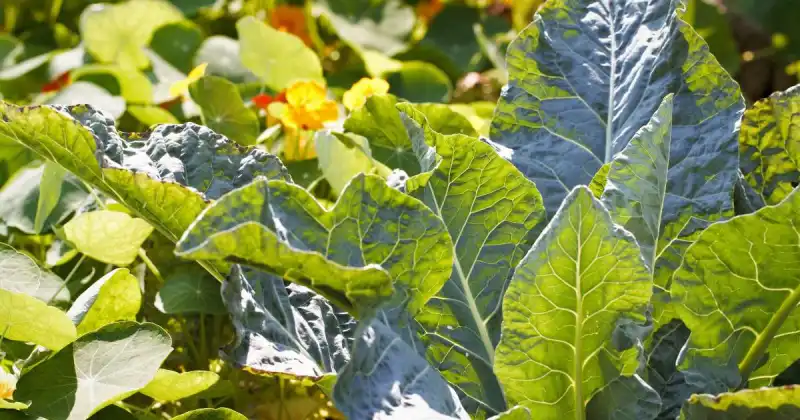
Sure, a little planning is required when first deciding on the placement of your crops, but fear not! The excitement of designing your garden’s layout is half the joy of gardening, as it includes a fun, creative element to your space.
And while the scientific explanation behind why companion planting works is still a bit of a mystery, don’t let that discourage you. On the contrary, abundant testimonies and centuries of successful practices by gardeners who swear by the method prove that companion planting is the real deal and can help transform a stagnant garden into a flourishing one. 1
History Of Companion Planting
Companion planting is an ancient agricultural practice used by farmers and gardeners for centuries. And while we have yet to determine when or where it originated precisely, it is clear that people worldwide have been using it with great success for a very long time.
This video helps demystify the practice of companion planting and encourages you to apply the technique in your green space. With just a touch of planning and understanding a few basic plant combinations, you’ll be well on your way to incorporating this practice in your backyard garden.
As mentioned in the excerpt of the Art of Companion Planting, in North America, it was the Native Americans who were known for their companion planting practice called “Three Sisters.”
They would sow their main staple crops of corn, beans, and squash together, as the “Three Sisters” were considered sacred and were believed to be protected by spiritual beings. The Native Americans had a unique way of planting them that was highly respected and effective.
Throughout history, farmers and gardeners have experimented with different combinations of companion pairings with varying degrees of success. This knowledge has been passed down through the generations and has become part of the folklore of many different cultures. Over time, as plants and horticultural methods have evolved, so too have how companion planting is practiced and utilized.
The use of chemically-based pesticides and fertilizers and advancements in seed technology, propagation, and cultivation have all impacted how we approach gardening today. Yet, despite these changes, the basic concept of companion planting has remained the same. The practice is still a powerful tool for improving the health and productivity of any garden, large or small. As a result, it continues to be a widespread practice among growers worldwide looking for an edge in their green space.
Science Behind Companion Planting
Companion planting is a fascinating technique that relies on the scientific principles of how plants interact with each other. It involves understanding how certain plants release chemicals that can positively or negatively impact their neighbors.
Check Lowest Prices On Companion Planting Books
For example, some plants can release chemicals that repel pests or attract beneficial insects. In contrast, others can release different chemicals that may inhibit the growth of nearby plants or even attract harmful and unwanted pests to your garden. 2
Competition for soil nutrients is another factor impacting plant growth and is an important consideration when practicing companion planting. Some plants have a higher demand for particular soil nutrients, and when grown together, they can aggressively compete for these vital resources. Ultimately, if one plant outmaneuvers another, it can result in stunted growth or poor yields in the latter.
On the other hand, some plants can play nice and happily enjoy sharing resources, such as nutrients and water. This symbiotic relationship is especially prevalent when these friendly foliage neighbors benefit their companions by offering welcome shade, providing physical support, or acting as a trap crop by directing unwanted insect predators away from other, more vulnerable plants.
Plant Compatibility And Why It Works
Plant compatibility is a critical factor when it comes to succeeding in the practice of companion planting. When planning your garden, consider choosing the right companion plants based on their ability to attract beneficial insects, repel pests, fix nitrogen in the soil, or whatever your individual garden goals may be during the growing season. Some plants even have complementary growth patterns or unique nutrient requirements, allowing them to share resources more effectively within your green space.

Companion planting works because it creates a diverse ecosystem in the garden, with different plants providing a range of benefits to each other throughout their growth cycle. For example, by growing various crops together, gardeners can reduce the risk of pests and diseases, improve soil health, and increase yields, all while taking these burdens off the shoulders of the humble gardener and allowing Mother Nature to work on your behalf.
How To Organize Your Garden For Companion Planting
Organizing your garden in preparation for companion planting comes down to understanding good and bad pairings along with basic plant combinations that have traditionally worked well. If you have yet to try companion planting in your garden, consider starting small with a few essential pairings and aim for plants with a reliable history of garden cooperation that benefit each other, like the “Three Sisters” of corn, squash, and beans.
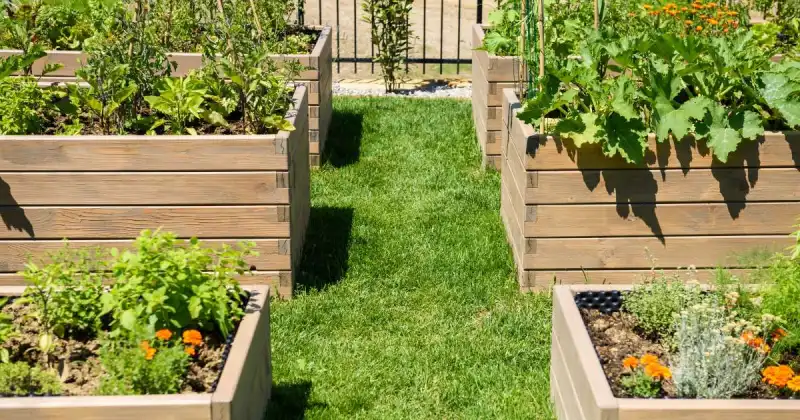
Good Combinations For Companion Planting
Good companion planting combinations involve integrating two or more plants that have a mutually beneficial relationship. For example, planting basil alongside tomatoes can help repel pests while improving the flavor of your tomatoes. Another example is planting beans alongside corn. The beans use the corn stalks for structural support when climbing while providing nitrogen to the soil that the corn enjoys.
Other good companion planting combinations include planting marigolds alongside tomatoes and squash to help deter unwanted pests, like tomato worms and squash bugs. Likewise, pairing lettuce or spinach with strawberries makes for a powerful combo. The leafy greens help shade your berries, crowd out unwanted weeds, and retain soil moisture, all of which keep your strawberries happy and healthy.
Bad Combinations For Companion Planting
Bad companion combinations involve sowing two or more plants nearby that may negatively impact each other’s growth and health. For example, planting alliums like garlic and onions near beans or peas can stunt the latter’s growth. 3
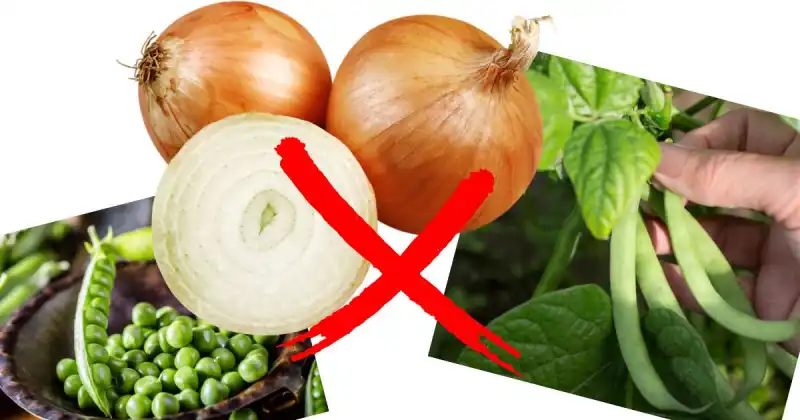
Other examples of poor garden companions are brassicas, like broccoli and cabbage, planted alongside tomatoes. Brassicas and tomatoes can attract the same common pests, which increases the risk of disease and infestation within your space.
Therefore, consider growing these crops in different parts of your garden. Remember, it’s essential to research the compatibility of other plants before planting them together to avoid any negative interactions and save yourself a ton of potential trouble.
Basic Companion Plant Combinations
Basic companion planting combinations involve pairing plants that complement each other’s growth or provide mutual benefits that improves the health and well-being of your plants. One of the most well-known primary companion planting varieties is the “Three Sisters” combination of corn, beans, and squash used by Native American cultures mentioned above.
Another basic combination example is planting carrots near onions or leeks, which can help repel pests and improve the flavor of both crops. Other essential companion planting matches include planting herbs alongside vegetables, such as thyme with eggplants, and planting flowers with vegetables, such as marigolds with tomatoes.
Some additional friendly companions you may consider in the garden are:
1. Carrots and leeks
2. Sage and brassicas (broccoli, cauliflower, cabbage, Brussels sprouts)
3. Tomatoes and celery, cucumbers or peppers
4. Potatoes and beans or peas
19 Benefits Of Companion Planting
There are plenty of companion planting benefits that come along with the practice, including:
- Helping to deter damaging garden pests
- Acting as trap crops
- Attracting beneficial pollinators
- Improving biological controls in your space
- Reducing disease
- Amending soil health and fertility
- Maximizing garden space
- Reducing the need for synthetic fertilizers
- Increasing plant productivity
- Organizing your garden’s layout
- Improving the taste of nearby crops
- Growing more variety
- Creating garden barriers
- Controlling weeds
- Preventing soil erosion while improving soil moisture
- Creating welcome shade
- Allowing plants to share nutrients and resources
- Providing structural support
- Enhancing garden aesthetics

Let’s look at these excellent advantages to determine if companion planting may be suitable to help you reach your garden goals.
Helps Deter Damaging Pests
Companion planting is a sustainable and natural way to protect your garden from damaging pests that look upon it like an all-day Vegas buffet. Perhaps one of the most significant and discussed benefits of this practice is insect deterrence. Strategically planting certain plant species around your garden can help deter insects and the many problems they can bring, like spreading disease. 4
Check Lowest Prices On Garden Pest Solution Books
Trap Cropping
One effective technique alongside companion planting is trap cropping, which involves selecting attractive plants that are irresistible for pests to pass up. Naturally, these pests are lured from the main crops you seek to protect, reducing pest damage and limiting the need for harmful pesticides. Trap crops can be tailored to specific pests but must be monitored regularly for effectiveness, like many gardening activities.
Depending on the types of pests you are attempting to lure away from your prized vegetables, here is a short list of trap crops that can help do the trick. As you can see, some trap crops can be vegetable plants themselves. If this is the case, assume you may not achieve a complete harvest from these sacrificial plants or consider planting more. 5
- Roses for Japanese beetles
- Zinnia for Japanese beetles
- Marigolds for mosquitoes, squash bugs, and tomato horn worms
- Geranium for Japanese beetles
- Radishes for flea beetles
- Nasturtium for flea beetles and aphids
- Collards for cabbage worm
- Mustard plants for lygus bugs
- Chervil (French parsley) for slugs and snails
- Millet for squash bugs
- Amaranth for cucumber beetles
- Vetch for stink bugs
- Dill for tomato hornworms
- Okra for aphids
Attracts Beneficial Pollinators
Companion planting also attracts beneficial pollinators like bees, butterflies, and dragonflies, which are crucial for the reproduction and growth of many plants within your garden.
By choosing fragrant and visually attractive plants, you can entice these insects into your garden, ensuring your plants receive the necessary pollination they need to thrive. For example, plants like lavender and borage are excellent pollinator magnets, especially for bees, due to their bright colors and fragrant blooms.
It’s not just insects that help your green space. Birds also make excellent garden pollinators. There are nearly 2,000 bird species worldwide that enjoy the nectar from flowers. In the United States, hummingbirds are crucial in the pollination of wildflowers. So, creating a welcoming, flowery environment for our other winged friends is paramount when encouraging your garden to blossom.
Improves Biological Control (Insects vs. Pests)
Companion planting is an effective way to improve biological control in your garden. By attracting predatory insects that feed on harmful pests, like ladybugs and lacewings, you can reduce the need for chemical pesticides and promote a healthier garden ecosystem. In addition, with this sustainable technique, certain plants act as “sacrificial” friends (trap cropping) to protect their green neighbors from pest damage.

To attract beneficial insects like lacewings and ladybugs, natural predators of aphids and spider mites, gardeners can plant flowers such as daisies, yarrow, or alyssum. Additionally, growing herbs like dill, fennel, and cilantro can attract hoverflies, which are known to feed on pests such as whiteflies and thrips. Thus, companion planting helps create a balanced ecosystem in your backyard garden where beneficial insects can thrive while keeping harmful pests in check.
Check Lowest Prices On LIVE Ladybugs
It’s important to note that using chemical pesticides for bugs in the garden can wreak havoc. Granted, if the infestation is large enough or the life of your plants is at stake, chemical applications may be necessary.
However, it’s important to note that when used, these synthetic chemicals also kill predatory insects – the very same bugs feeding on your unwanted intruders. When used regularly, the colony you are trying to eradicate may develop a chemical immunity and come back stronger now that there are no natural predators within your garden space, creating an unending cycle between infestation and chemical application.
Therefore, consider luring predatory insects, bees, and birds into your garden through natural means first. For example, birds love flowers and birdbaths. Likewise, ladybugs enjoy a wooden home and a bit of water to drink. And if you must resort to chemicals, be sure to spray at dusk when most of these beneficial pollinators have gone home for the night.
Reduces Disease
Companion planting offers a natural and effective way to reduce the risk of diseases popping up within your garden. By improving soil health and creating a diverse ecosystem, this technique provides natural protection against diseases without chemical treatments.
Embracing companion planting means you can rely on the symbiotic relationships of your plants, such as the nitrogen-fixing ability of beans that help reduce soil-borne diseases when planted alongside corn.
Improves Soil Health And Fertility For Optimal Plant Growth
By planting compatible plant species together in your garden, you reduce the risks associated with monoculture, which is the growth of a single crop within a designated space. Additionally, you promote increased soil health, leading to better plant growth and productivity throughout the lifecycle of your plant.
Further, companion planting helps increase soil fertility while reducing the need for chemical inputs, thus making your garden more sustainable and hospitable. For instance, planting beans with corn can improve the soil’s nitrogen content, which may benefit the following successive crop grown in the same area. 6
Saves Valuable Garden Space
Companion planting maximizes valuable space by allowing plants to utilize vertical garden space. This technique will enable you to make the most out of your garden and optimize it for different companion plant selections. Your plants no longer need to grow out, as they can also grow up. To save space, carefully select plant combinations and utilize trellising or other supporting systems, like cages, where your plants vine and climb upwards.
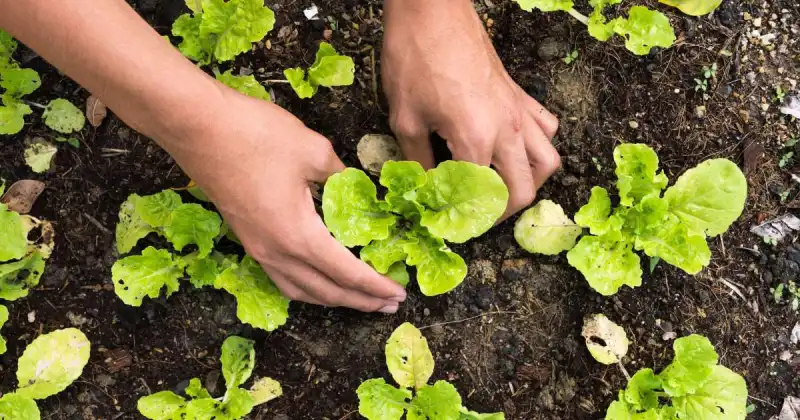
This approach takes advantage of valuable garden space, reduces the need for extra resources such as water and fertilizer, and saves money. Who knew that companion planting could be a sustainable and cost-effective way to grow your garden and achieve more abundant harvests?
Reduces The Need For Synthetic Fertilizers (Nitrogen Fixation)
Nitrogen is an essential nutrient vital to overall plant growth and development. It is a primary component of chlorophyll, the pigment responsible for photosynthesis, and is necessary for producing proteins, enzymes, and other essential molecules. However, many backyard garden soils lack sufficient nitrogen, which can severely limit plant growth, and as a result, reduce crop yields.
To avoid this common challenge, sow peas and beans, which are nitrogen-fixing plants. These plants form a symbiotic relationship with soil bacteria known as rhizobia. Rhizobia is a type of nitrogen-fixing bacteria commonly found in soil, especially in the root nodules of leguminous plants like beans, soybeans, clover, lentils, and chickpeas. It forms an interdependent relationship with these plants and resides in nodules on their roots.
As this video demonstrates, getting started with companion planting doesn’t need to be complicated. Humble gardeners of all skill levels can quickly implement this valuable practice in their backyard and begin seeing results quickly.
The rhizobia bacteria take atmospheric nitrogen gas and convert it into a usable form of nitrogen that the plant uses efficiently. This process benefits the nitrogen-fixing plant and other nearby plants that require nitrogen for healthy growth.
By planting nitrogen-fixing plants alongside other plants in a companion planting system, any backyard gardener can naturally increase the amount of nitrogen available in the soil without resorting to synthetic fertilizers. Aside from reducing the need for chemical inputs, you can promote healthier plant growth and improve soil health, making companion planting an environmentally-friendly approach to gardening.
Increases Garden Productivity
Companion planting is a sustainable gardening practice that can significantly increase your garden’s productivity. This process is achieved by pairing compatible plants that share nutrients, water, and other resources within your garden’s soil. As a result, you’ll gain a healthier garden ecosystem with increasing yields, allowing gardeners to use their space more frequently and efficiently throughout every season. 7
Helps Organize Your Garden’s Layout
Companion planting is a gardening technique that considers plants’ natural growth habits and interactions with other nearby foliage. For example, pumpkins and squash require more space due to their sprawling and stretching growth, while herbs like basil and parsley can grow together in small pots.

You can plan by utilizing companion planting, lay out your garden correctly, and optimize your garden space according to each plant’s growth tendencies.
Check Lowest Prices On Garden Planners And Log Books
Improves The Taste Of Other Nearby Crops
Friendly neighborly foliage in the garden not only helps plants grow better together but also enhances the taste of other crops growing nearby. When certain plant combinations are grown together, they can release natural compounds that enhance the flavor of each other, making this a tasty technique.
Additionally, the microclimates created by companion planting within your green space can provide optimal growing conditions, resulting in healthier and tastier plants. One of the best examples of this practice in action is when basil grows alongside tomatoes, enhancing their flavor. Another is planting beans with corn which can help fix nitrogen in the soil and improve the taste of both crops.
Allows The Gardener To Grow More Variety
Companion planting can help gardeners grow a greater variety of plants throughout the season. This benefit is advantageous when there are a limited number of spaces to produce different kinds of plants. By planting compatible plants together, the humble gardener can maximize the use of their space and grow a greater variety of plants. For instance, planting taller plants alongside shorter ones can help create shade while promoting the efficient use of space.
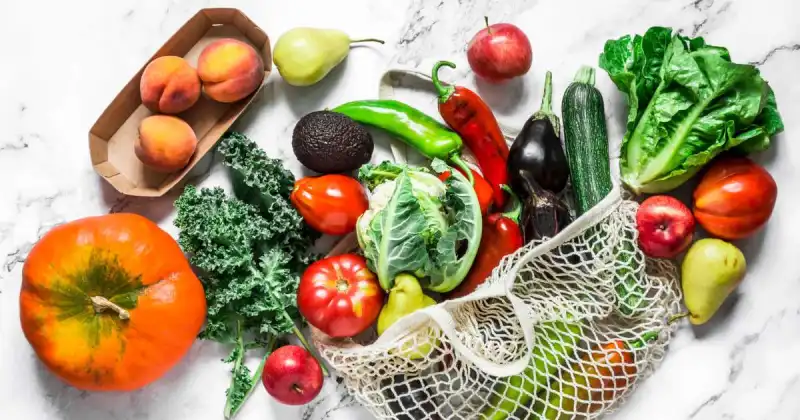
Creates Garden Barriers
Companion planting can provide an excellent solution for creating garden barriers. Gardeners can create natural boundaries by selecting plants that are effective in repelling pests or have suitable growth characteristics.
For instance, plants in the allium family, such as onion and garlic, have intense aromas that repel pests, making them effective border plants. Additionally, sunflowers can create a physical barrier separating different garden areas with their tall and bushy growth patterns.
Check Lowest Prices On Onion Seeds
Creating practical barriers can be especially useful for those wanting to create distinct sections for different types of plants, such as a vegetable garden, a flower garden, or an herb garden.
Creating effective barriers also helps deter animals, like rabbits, deer, opossums, and squirrels, from entering your garden. Likewise, it can keep your curious pets from wandering into your space and inadvertently trampling your germinating seedlings.
Consider rosemary, mint, and thyme to help avert deer, while chives, onions, sage, and catmint help discourage rabbits.
Controls Weeds
Sowing the right kind of plants in the garden can be an effective natural method of suppressing pesky weeds without applying broad-based chemical herbicides. In addition, some plants, such as clover or vetch, can be used as cover crops to suppress weed growth over winter by competing for nutrients and shading the soil.
Check Lowest Prices On Cover Crop Seed Mix
Still, other plants, such as marigolds or nasturtiums, have allelopathic properties, releasing unique chemicals into the soil that inhibit weed growth. Additionally, companion planting can create a dense planting pattern that limits the amount of bare ground, reducing the space available for weeds to grow.
Prevents Soil Erosion And Helps Your Garden Retain Water
Companion planting can help prevent soil erosion and improve water retention by improving soil structure and promoting healthy soil microbiology.
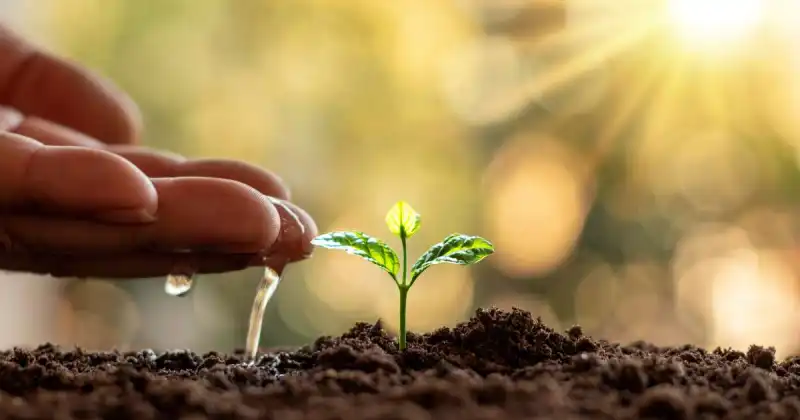
When planted together, the root systems of companion plants can help hold soil in place and prevent it from being washed away during heavy rainfall or wind, especially over the winter months when the garden typically lies dormant.
Additionally, companion planting can increase the soil’s ability to absorb and retain water. Finally, as mentioned above, certain plants, such as legumes, help fix nitrogen in the soil when growing, further enhancing soil health and water retention throughout your growing area.
Creates Welcome Shade
Companion planting can help create welcoming shade in your garden by utilizing taller plants that cover smaller, stockier ones that require protection from the sun’s intense heat. For example, planting a tall sunflower or trellising a climbing plant, like pole beans, can offer shade to shorter, sun-sensitive plants like lettuce or spinach. Shade-loving plants can also be sowed under taller plants, creating your garden’s own microclimate that promotes optimal growing conditions for the shaded plants while keeping the soil cooler for the taller ones.
Check Lowest Prices On Pole Beans
Allows Plants To Share Soil Nutrients And Resources
Companion planting can allow plants to share soil nutrients and resources by creating a diverse garden ecosystem. This diversity promotes healthy soil microbiology and nutrient cycling, helping to make your garden a powerhouse of productivity. 8
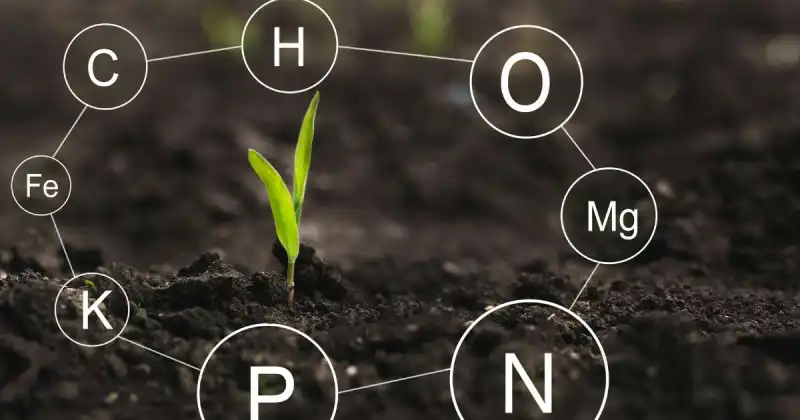
In addition, growing friendly neighboring plants can play a prominent role in this nutrient-cycling process. For example, raising different types of plants together with complementary nutrient needs and uptake patterns helps increase soil fertility and health throughout your green space.
Provides Structural Support (Trellises) For Your Plants
Structural support is a wonderful benefit of companion planting. Consider using trellises, stakes, and other support systems to help plants sturdy themselves while growing upright. Sunflowers are a well-known example of a companion plant that provides support to others. Their tall, sturdy stems shield against damaging winds, benefiting nearby plants.
Check Lowest Prices For Garden Trellises
Enhances Garden Aesthetics
Companion planting not only provides practical benefits but also contributes to the visual appeal of your garden. Incorporating plants with different colors, textures, and forms creates a visually pleasing and exciting layout for yourself and the beneficial insects and birds who call your garden home. 9
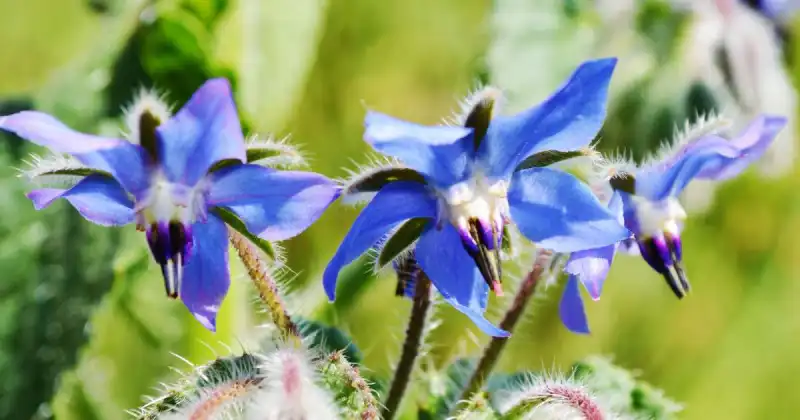
For instance, marigolds and roses offer pest protection and add a beautiful touch to your space with their vibrant hues and unique textures. Similarly, Borage, a spectacular blue starflower, is an annual herb that is a magnet for pollinating bees while making for a delicious addition to many soups and yogurts.
Check Lowest Prices On Borage Seeds
Conclusion
Companion planting is a technique that has been used for centuries to achieve optimal plant growth and health in many cultures. Although significant scientific research has yet to prove its effectiveness, generations of backyard gardeners, including myself, swear by this simple practice.
By combining the right plants, gardeners can create a harmonious environment that improves soil health and productivity and reduces the need for chemical pesticides and fertilizers, helping both the garden and the environment. And by sowing friendly garden neighbors nearby, you help create a varied ecosystem right in your backyard, filled with plants that benefit one another.
Although companion planting has many advantages, including controlling weeds, attracting beneficial pollinators, amending soil health, promoting fertility, creating practical and colorful barriers, and organizing the layout of your garden, this humble practice goes well beyond just pairing sets of plants together.
Your garden doesn’t have to struggle any longer. Take advantage of the opportunity to enhance your gardening experience and reap the numerous benefits of this sustainable and natural approach by unlocking the full potential of your own backyard garden.
Are you already a companion-planting rockstar? What benefits have you experienced because of the practice? Meet me in the comments below, and let me know how this method has impacted your garden!
SOURCES
- Wikipedia – Companion Planting
- Montana State University – The Science Of Companion Planting In The Garden
- University Of Massachusetts, Amherst – Companion Planting In The Vegetable Garden
- University Of Minnesota, Extension – Lacewing
- Wikipedia – Trap Crop
- National Library Of Medicine, National Center For Biotechnology Information – Reuniting The Three Sisters: Collaborative Science With Native Growers To Improve Soil And Community Health
- University Of Minnesota, Extension – Companion Planting In Home Gardens
- United States Department Of Agriculture, Forest Service – Bird Pollination
- Wikipedia – Borage


